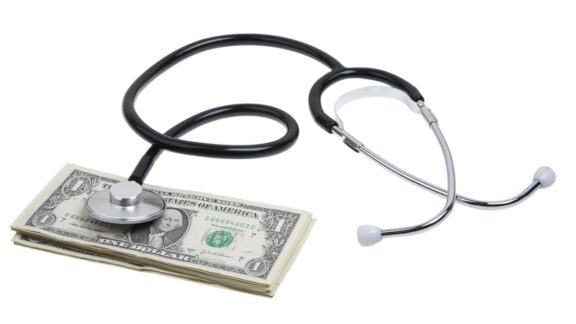Young people have made thrift-store shopping cool, and older adults can hitch a ride on the trend. Whether you are trying to pinch pennies or simply save your money for more meaningful purchases, use these tips for successful secondhand shopping – even for gifts!
Although secondhand shopping is nothing new, it has seen a resurgence in recent years thanks in large part to younger generations — particularly eco-conscious and thrifty millennials and Gen Zers. The rapid growth of online resale marketplaces has made it clear that for many, secondhand no longer equates to second best. A record number of shoppers bought secondhand apparel in 2024, according to the 2025 Resale Market and Consumer Trend Report by ThredUp, a leading online apparel reseller. Nearly 60% of all consumers, and nearly 70% of Gen Zers and millennials, shopped for secondhand clothing last year.
In addition to extending the life of usable items and keeping them out of landfills, secondhand shopping can save you a lot of money. People who purchase thrifted items save more than $1,700 per year, or about $150 a month, according to a survey by CouponFollow.com. And given that tariffs may raise prices on clothing and some other consumer goods, buying used may be more attractive than ever. Consider the following strategies if you’re interested in buying secondhand. You might just find that someone else’s trash really is your treasure.
Three key categories of secondhand shopping
Apparel
Thanks to the relentless cycle of new looks each season and the profusion of apparel the fashion industry produces, clothing and accessories are low-hanging fruit when it comes to secondhand shopping. You can find barely worn clothes and even new items with tags still attached for a fraction of their retail price.
Plus, vintage looks are in vogue. Rihanna, Margot Robbie, Kylie Jenner, Emily Ratajkowski and many more stars donned vintage threads on the red carpet in 2024. Crafty shoppers are also “upcycling” used clothing, increasing the value of a gently used item by mending, dying, or otherwise beautifying it or improving its functionality.
Sometimes, you may track down an item that you haven’t been able to find new in your preferred size and color by checking out platforms such as eBay, Poshmark or ThredUp. You may pay close to the original price if the item is new with tags and quantities are limited. But otherwise, you should see discounts of 50% or more off of original retail prices, says Kelly Levenson, a seasoned secondhand shopper and owner of Forest Door Boutique, based in Sandwich, New Hampshire.
You’ll often find the best deals at thrift stores such as Savers and Salvation Army, although the pickings can be hit or miss, says Levenson. As for Goodwill, you’ll find the best deals on clothes at one of its outlet stores, which are geared toward resellers and charge by the pound of clothing rather than by the item. Typically, you can buy clothing for about $1 to $2 per pound. “It’s a little bit chaotic, but it’s also kind of fun,” Levenson says. Go to www.gwoutletstorelocator.com to find one near you.
Community-run clothing swaps, local BuyNothing groups (https://buynothingproject.org) and local consignment stores are also reliable places to shop for secondhand apparel and accessories. Some sellers, such as Levenson’s boutique, will curate a box of items for buyers based on their size and taste. You can also find style bundling on platforms including Poshmark, Etsy and Depop.

If you have an eye for fashion, you may be able to find designer or high-end brands secondhand for a steal, but you should be on the lookout for scams. Some resale platforms, such as luxury consignment marketplace TheRealReal.com, authenticate items before they put them up for sale. PoshMark and eBay also offer authentication services for certain items.
Home furnishings
Because furniture tends to be durable, buying it secondhand can be a smart way to save money without sacrificing quality. You may find items that are as good as new for a fraction of their retail cost. Home furnishings are often bulky and difficult to transport, so owners may look to offload them when moving to a new home, even if they’re in great condition.
However, exercise caution with used couches and chairs that have fabric-lined cushions, which could be home to pests (such as bedbugs or fleas), even if they appear to be clean. If you do want to buy something that has a cushion or any other kind of fabric, ask whether it is from a smoke-free and pet-free home, because fabrics can hold allergens and odors. If an online listing that interests you provides limited photos, ask for details, especially of any imperfections or flaws. It’s best to avoid secondhand mattresses altogether, both for hygiene reasons and because mattresses lose their support over time.
But furnishings such as dining tables, light fixtures, cabinetry, mirrors and dressers can be great finds on the secondhand market. As you shop for furniture, look for durable materials, such as solid wood, which lasts longer than composite wood. You may even discover good deals on home-renovating supplies, such as paint, stone, tile, wood flooring, doors and windows. You’ll find a marketplace of building and home-improvement supplies, among many other types of items, at OfferUp.com.
When it comes to prices for gently used furniture, a good rule of thumb is that items hold anywhere from 20% to 50% of their original value, depending on condition. Don’t be afraid to negotiate if you think a seller’s asking price is too high. To back up your offer, point to similar recently sold items, which you can find by searching for your item on eBay and filtering for “recently sold.”
Related: Thrifted Gifts – Unique and Money-Saving
Baby and children’s items
Because little ones grow quickly, the secondhand shopping market bustles with gear for babies and children. Some items are best avoided, however, even if the deal is enticing. For example, although you can often find new, still-in-the-box infant and toddler car seats selling at steep discounts, you may want to pass on them. You likely won’t have recourse if the manufacturer recalls the car seat, because a replacement, refund or repair is typically available only to the original, registered owner. (And you have even more reason to avoid used car seats because it’s difficult to verify whether they’ve been involved in an accident and sustained damage that could compromise their safety.) In addition, child car seats have expiration dates ranging from six to 10 years; their materials may break down over time, and after several years, they may not meet updated safety standards.
But other high-quality baby and children’s items can be found selling at bargain prices on the secondhand market. Resale platforms such as eBay and GoodBuy Gear (www.goodbuygear.com) are great places to start, along with Facebook Marketplace and swap groups such as BuyNothing. Be on the lookout for community-organized swap events for families with young children. Participating in a swap or shopping at a consignment store that sells children’s items can be an easy way to test out products before you buy, compare the products with similar items, and offload some of your own used items (if you have any).
You may find deep discounts on secondhand children’s clothing, shoes and toys, which can sell for as little as 10% of their original price. Gear such as travel cribs, baby bouncers, strollers and baby carriers, however, may retain as much as 40% to 50% of their original value. Avoid paying more than half of an item’s original price.
Emma Patch is a senior writer at Kiplinger Personal Finance magazine. For more on this and similar money topics, visit Kiplinger.com.
©2025 The Kiplinger Washington Editors, Inc. Distributed by Tribune Content Agency, LLC.
Read more money-saving articles on Seniors Guide:
Should You Airbnb or Vrbo Your Home for Extra Cash?




